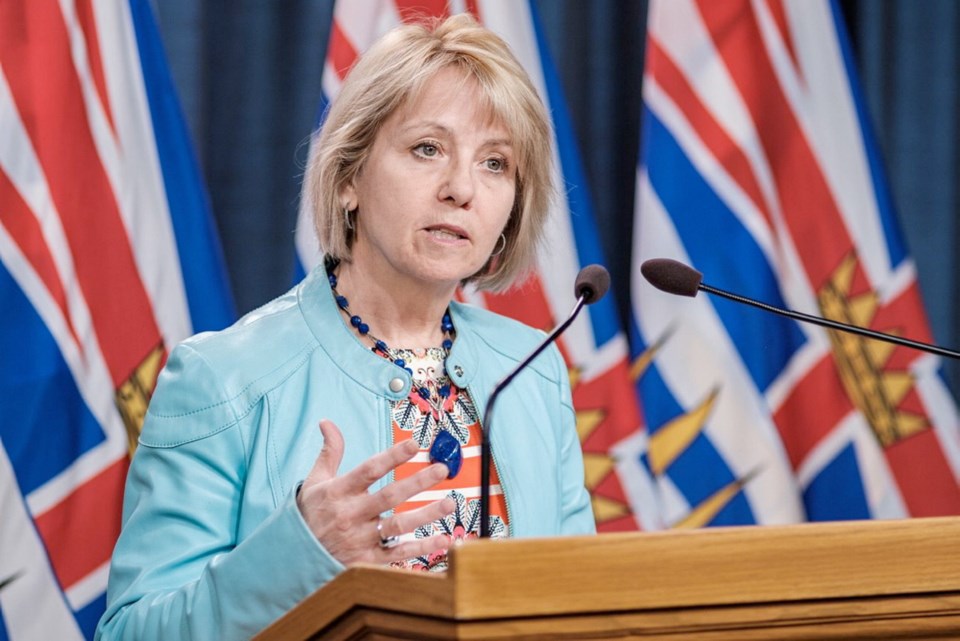A paper Dr. Bonnie Henry co-authored nine years ago illustrates how far beyond the conventional limits in public health thinking COVID-19 has pushed authorities.
B.C., led by Henry herself, has joined most of the rest of the world in imposing measures over the past month that were considered undoable in the world of pandemic response planning a decade ago.
“Social Distancing as a Pandemic Influenza Prevention Measure” took a hard look at the modelling that’s a feature of public health planning for infectious diseases. It surveyed scientific research around the world and raised questions about the lack of evidence supporting some measures.
The fundamental response of social distancing was supported as a means of reducing transmission. But the mathematical simulations showing effectiveness of other measures flowing from that were questioned.
One of the key findings was that travel restrictions and border control may briefly delay imminent pandemics, “however, these approaches are neither economically nor social feasible except in unique settings (e.g. small island.)”
It’s another indicator of how unimaginably severe the COVID-19 response today is, given global travel is almost shut down, and many borders are closed to all but essential movement.
The paper said once a virus is found in the top 50 airports, it accelerates rapidly. Shutting down air travel would buy about two months time to develop a vaccine, said the paper.
On the banning of mass gatherings, the paper said that “while such approaches should logically reduce influenza transmission,” there was no scientific study at that time (2011) that proved that point.
Such prohibitions “are not socially acceptable in most situations, especially for religious gatherings. Resource should instead be dedicated to case identification and patient treatment and isolation.”
The paper reviewed numerous findings on school closures and said the mathematical simulations show they can reduce transmission in an ideal setting.
“What is less clear is if these effects are still evident when key assumptions are only partly met.”
There were few studies that systematically compared transmission in areas with and without school closures.
The review of the literature suggested that widespread proactive school closures weren’t likely effective, partly because they weren’t socially or economically acceptable.
As with travel shutdowns and bans on mass gatherings, the drastic measure has been taken nonetheless, because of the severity of the novel coronavirus pandemic.
One of the issues she and co-author David Roth raised was that the models assumed that closing schools meant all children’s interactions would be limited.
They found several studies showing children not attending school still mingled with others.
The paper also noted school closures have to be balanced with the costs.
A U.K. study showed closing schools hiked absentee rates in the workforce by 16 per cent, which makes them even more expensive than pharmaceutical measures.
The bottom line cost of school closures multiplies the cost of other interventions many times, the paper said.
They also have social consequences that disproportionately affect the disadvantaged, and children who are struggling academically, since their work is interrupted.
Discussing the paper on Monday, Henry said it arose out of the H1N1 pandemic in 2009 and her concerns about modelling.
“As you’ve heard me say many times, modelling has its challenges, … None of them are perfect and none of them are right, they’re not predictive.”
She stressed the impacts of school closures.
For them to be particularly effective they need to be “for a fairly lengthy period of time.”
But: “Children who are falling behind, when we have prolonged school closures, they may never catch up in their lifetime and that has effects on their health.”
One of the points of the paper, written while she was at the B.C. Centre for Disease Control, was to learn how to minimize viral transmission but still support children in need, she said.
“The focus of the paper for me was recognizing the unintended consequences of prolonged closures and that we do them in a way that supported the most disadvantaged.”
Henry said much work has been done in that area in the three weeks since B.C.’s schools were closed.
The paper was filed with the National Collaboration Centre on Infectious Diseases.
COVID-19 has amplified her point considerably — modelling has its challenges.
Nobody ever modelled anything like this.



